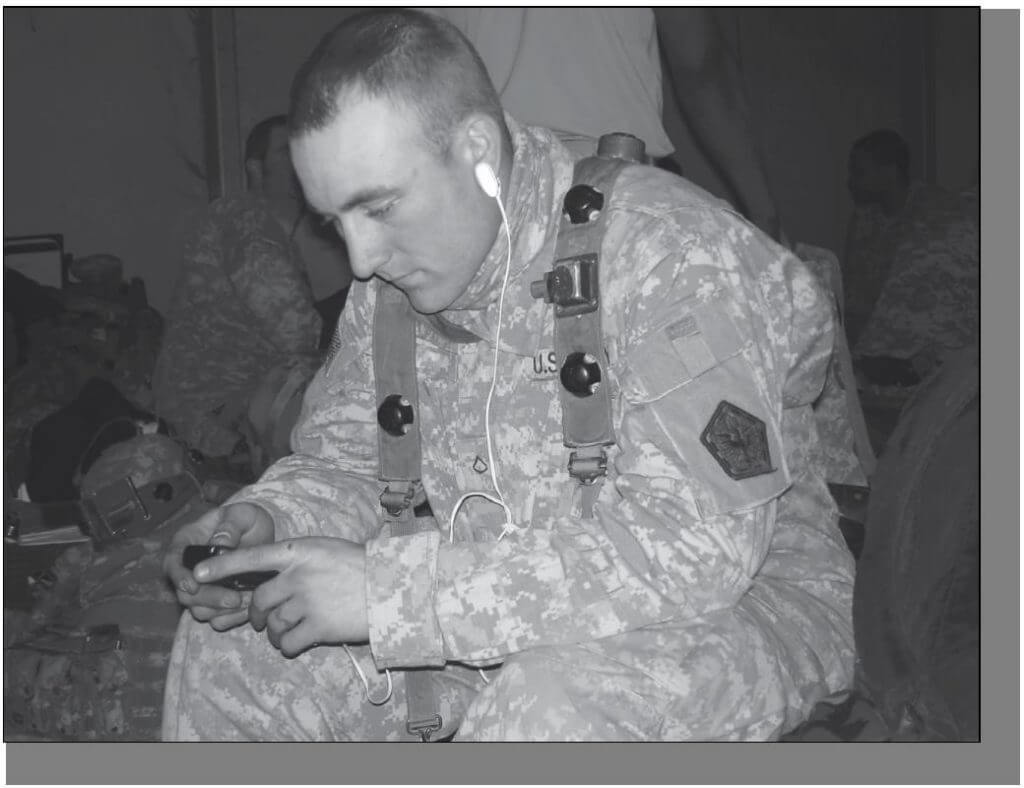By Mr. Brian C. Hite
In an effort to raise the level of Soldiers’ performance, the Army has introduced a program that addresses the mental and emotional aspects of their performance. The Army Center for Enhanced Performance (ACEP), an extension of the United States Military Academy’s Center for Enhanced Performance (CEP), seeks to enhance Soldier performance by increasing awareness of the connection between mind and body. ACEP presents Soldiers with concepts and techniques designed to foster confidence, improve attention, manage energy levels, and facilitate learning by emphasizing how the mind and body interact to affect performance.
The ACEP staff, located at Fort Lewis, Washington, briefed the I Corps command group in November 2007. They described how a mental training program could be used by the various units on post. The commander of the 555th Maneuver Enhancement Brigade (Provisional) saw the potential of this program and asked that a trainer be assigned to work with
one of the combat engineer units from Fort Leonard Wood, Missouri. He mentioned that the 5th Engineer Battalion had an upcoming National Training Center (NTC) rotation at Fort Irwin, California, and asked the ACEP trainer to Fort Leonard Wood to provide classroom training and accompany the unit to NTC.
In January 2008, an ACEP trainer flew to Fort Leonard Wood to provide mental training for the Soldiers of 1st Platoon, 55th Mobility Augmentation Company, 5th Engineer Battalion. The classroom training consisted of an informational brief coupled with hands-on exercises that allowed the Soldiers to put into practice the concepts they learned. The next month, the same trainer linked up with the Soldiers at NTC and conducted refresher training. Throughout the next 10 days, the trainer lived with the Soldiers and accompanied them on each mission to provide mental and emotional coaching. He was also a part of the after-action review (AAR) process. Issues affecting the Soldiers’ performances, such as negative thinking, lack of confidence, nervousness, anxiety, and lack of mission focus, were all discussed during the AARs and linked to aspects of the mental toughness training that address these issues.
The advice of the ACEP trainer had a profound impact on the Soldiers’ performance during an urban operations training exercise. Each squad went through the exercise separately. During the first squad’s initial dry-fire iteration, squad members appeared to be nervous, as evidenced by their poor communications techniques, excessively high energy levels, tendency to rush through each building, and failure to recognize potential threats. The squad proceeded through the iteration in a chaotic manner instead of performing as a smooth, controlled team. During the AAR, the observer/controller (O/C) pointed out the weaknesses and suggested a tactical pause before entering a room.
Using biofeed-
back techniques,
an ACEP trainer
coaches Soldiers
in the connection
between mind and
body.


The ACEP mental training helped the Soldiers’ performance in improvised explosive device defeat as well. One Soldier received a battalion coin after finding a piece of unexploded ordnance that an entire convoy of combat engineers had passed and missed.
Improved performance on missions, however, is not the only focus of ACEP training. It also teaches concepts and techniques to facilitate stress recovery following missions. The Soldiers engaged in stretching exercises and listened to relaxation compact disks (CDs) following missions. Many also used a biofeedback tool designed to increase their awareness of how their thoughts affect their bodies. One Soldier said the relaxation CDs helped get him calm and relaxed after a mission. Another Soldier commented that the biofeedback tool showed him which thoughts helped calm him and which thoughts were stressful. The ACEP training program provided the 5th Engineer Battalion Soldiers techniques for
efficient, effective stress recovery.
Now that the Soldiers have learned how to apply the mental and emotional concepts and techniques related to peak performance and stress recovery in a training setting, the next step for ACEP is to help these Soldiers use these techniques in a combat setting. The ACEP trainer will maintain contact with the unit via regularly scheduled video teleconferences with the unit leaders to provide ongoing guidance, troubleshoot any issues that may arise in the future, and train new Soldiers when they arrive.
The ACEP trainer repeated the O/C’s comments about high energy levels and the tactical pause, but took the feedback a step further. He referred to the earlier mental toughness training and explained how having too much energy can negatively impact performance by restricting mission focus, slowing cognitive processing, and increasing muscle tension. He also noted how several of the mental training techniques the Soldiers had learned could be used to control energy levels and direct their attention.
The Soldiers followed the advice of the ACEP trainer and O/C, incorporating a routine during the tactical pauses before entering each building and room. The routine consisted of the squad leader saying, “Stack right [or left]. Slow is smooth; smooth is fast. Ready.” The Soldiers would then inhale and exhale before the command of execution—“Go!” These actions addressed the issues of attention, anxiety, and nervousness by using a “cue phrase” (Slow is smooth; smooth is fast), and a calming breath that helped to direct attention to mission requirements and counter the physiological responses that accompany overly high energy levels, such as short, shallow breathing and muscle tension.
During the two hours between their first and second iterations, the Soldiers rehearsed their routine using glass house drills and mental imagery, and the improvement in their performance was amazing, according to the O/Cs. The officer in charge of the urban operations site said the Soldiers had rushed through their earlier clearance exercise, but that coaching, reiterating the cue phrase, and taking a tactical pause before clearing each area helped the Soldiers focus and regain control of their breathing and heart rate before moving to their next objective. That helped them move in a controlled manner, assess threats, and communicate more efficiently.





